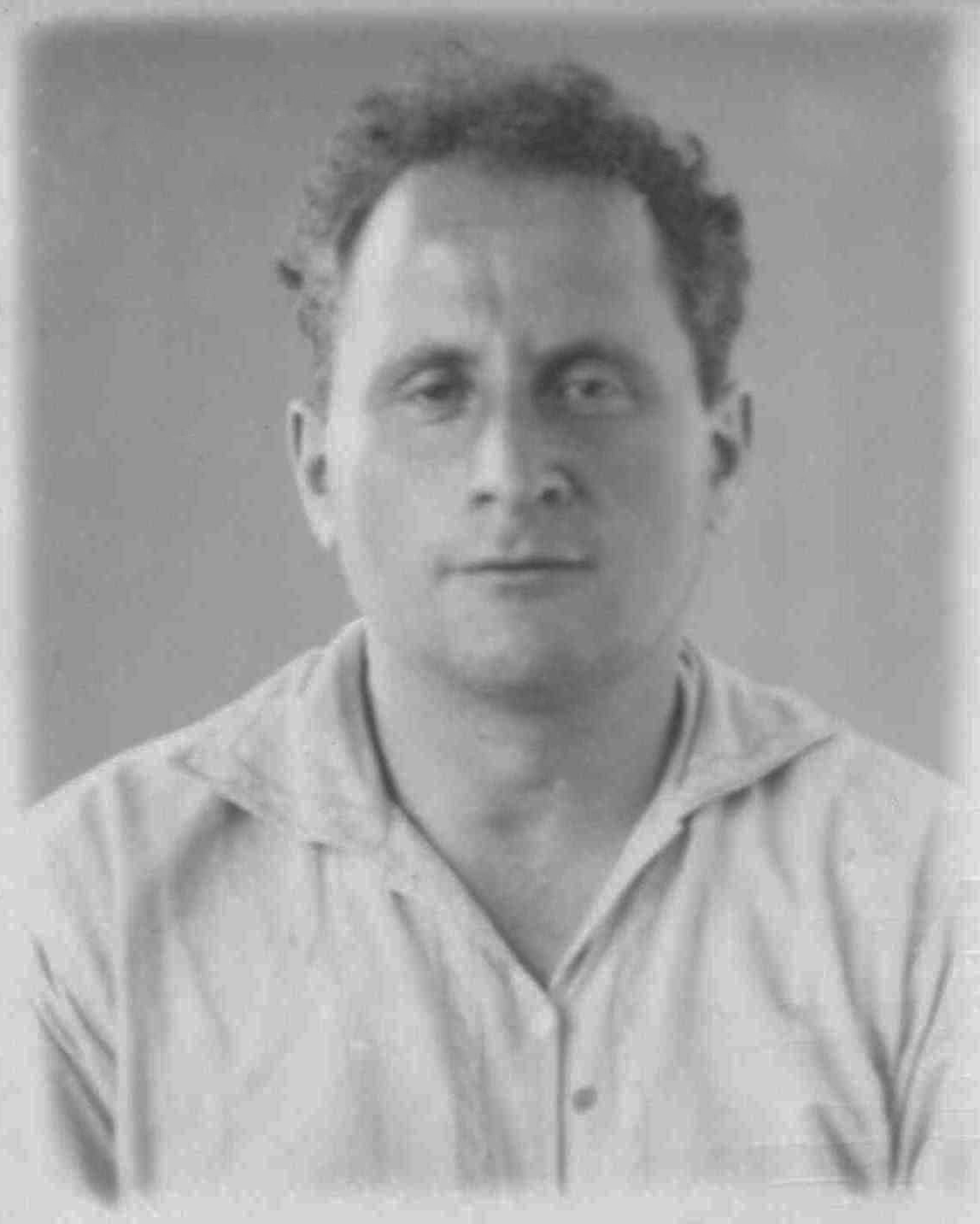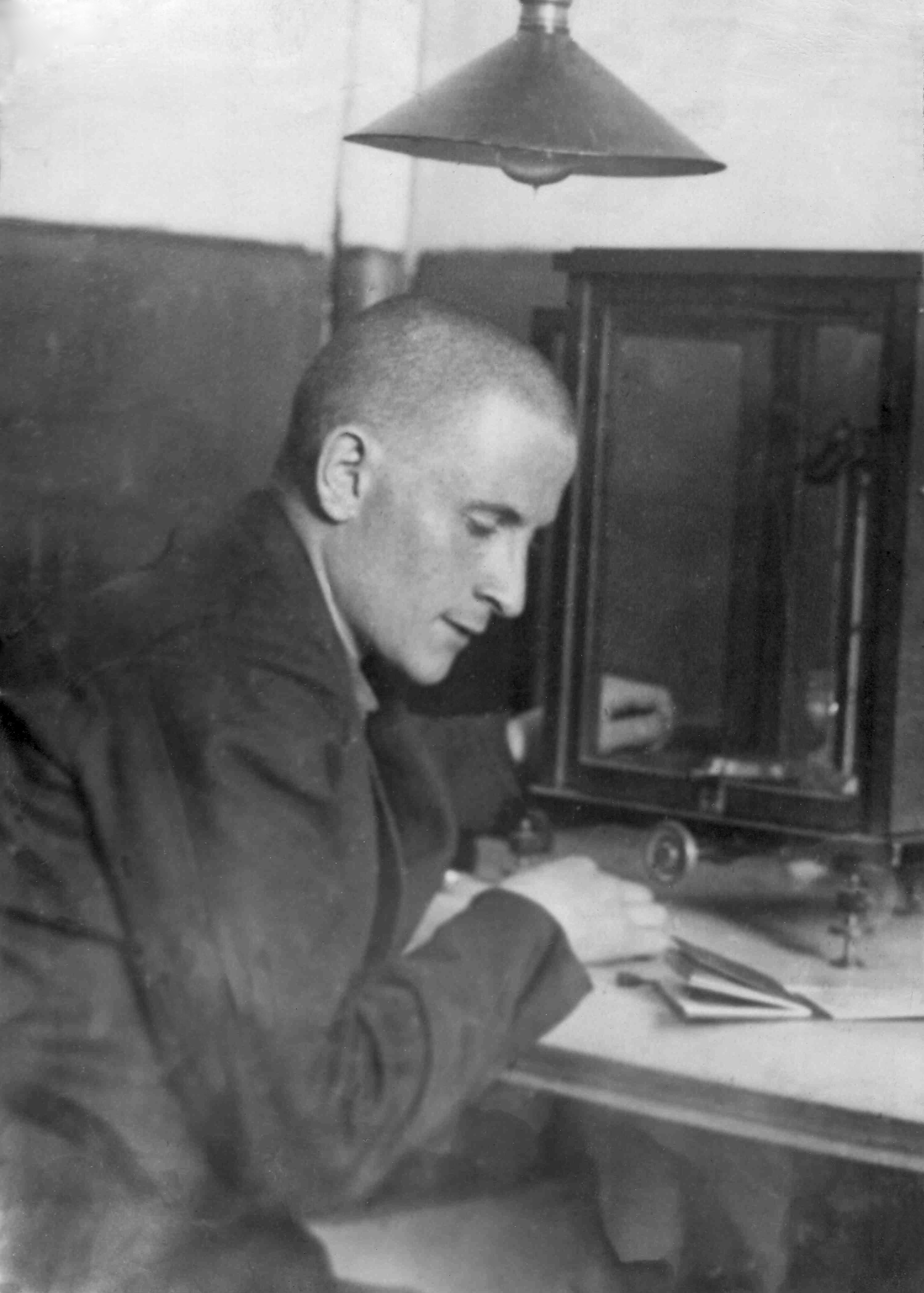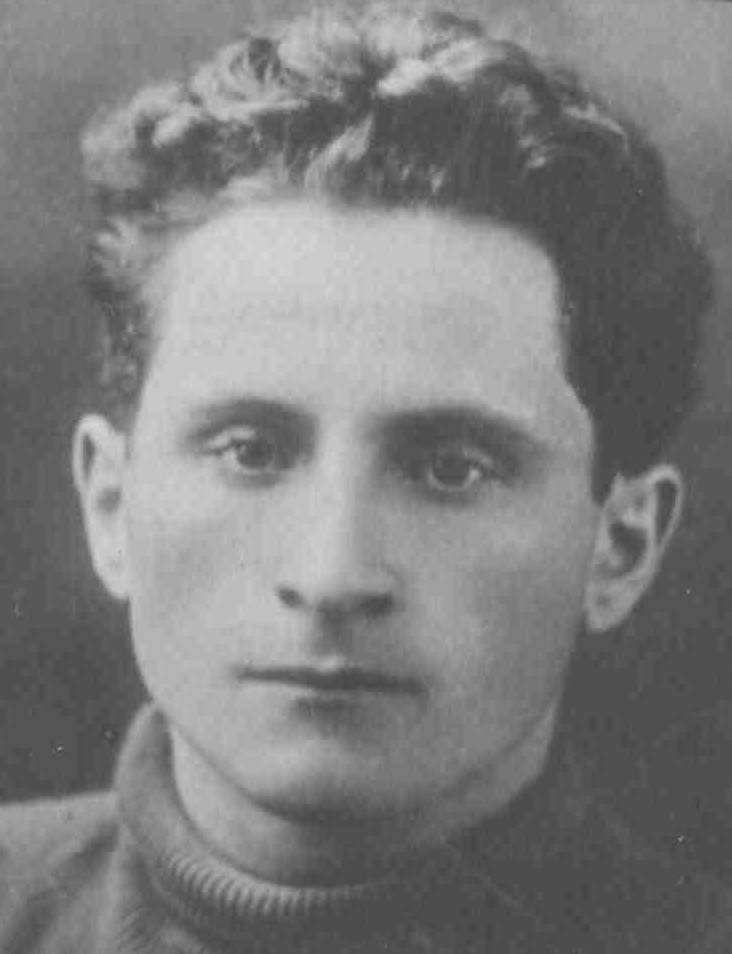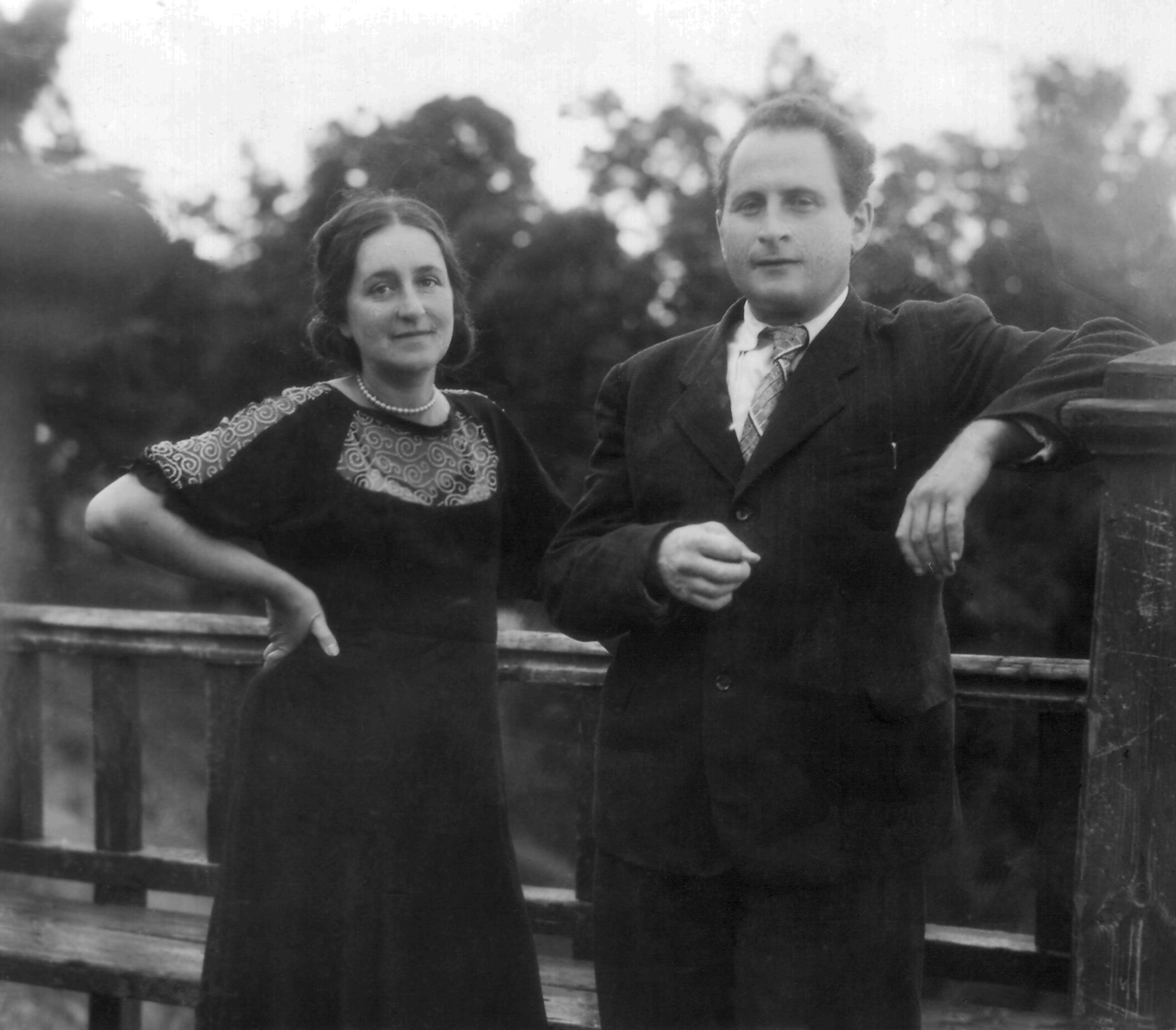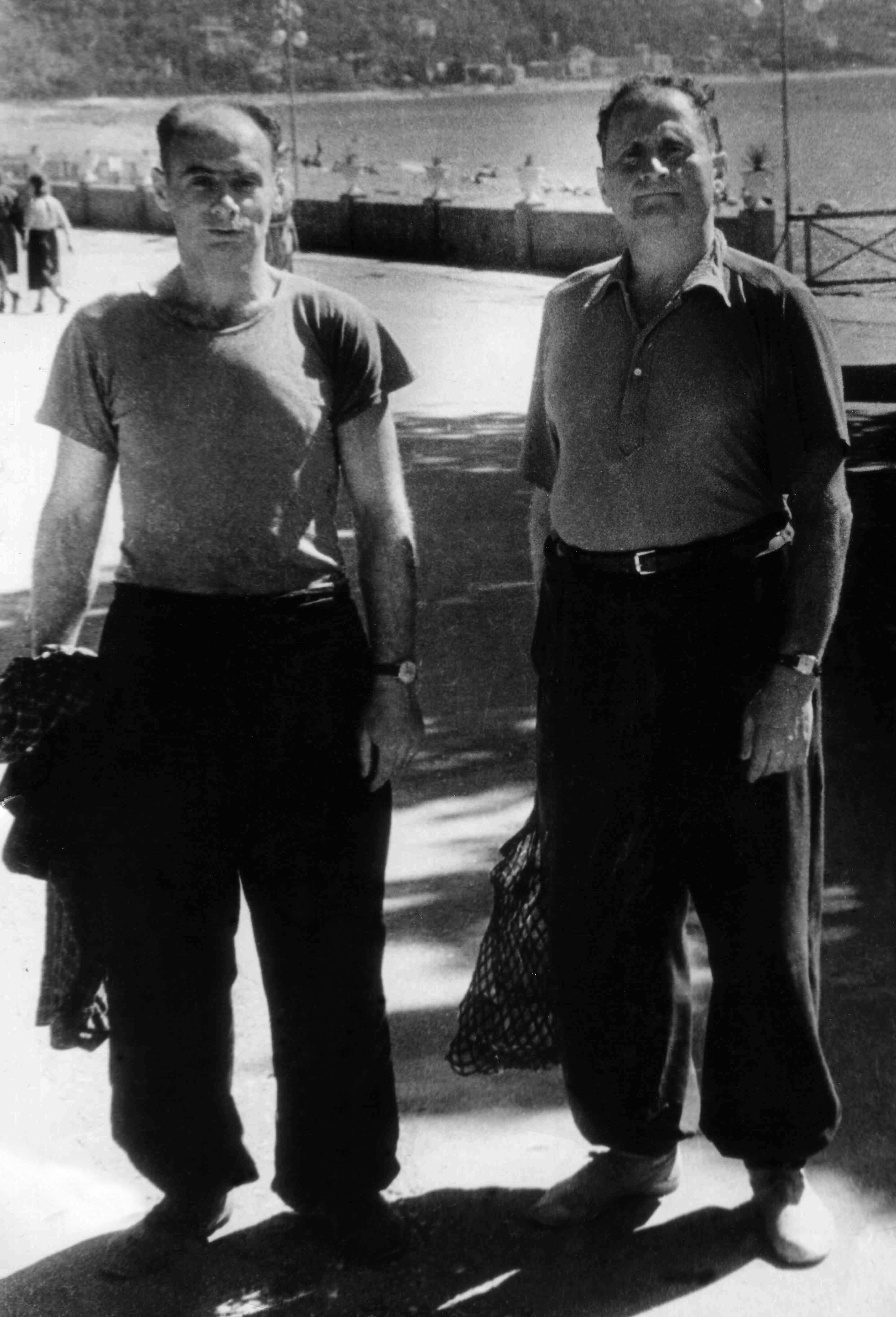The life and works of
David A. Frank-Kamenetskii
“…one
of those who
constructed the foundations of a new branch of science”
Y. B. Zeldovich
The
Main Book of D. A. Frank-Kamenetskii and Its Author
An obituary from Yakov B. Zeldovich
Wikipedia in English: David A. Frank-Kamenetskii
Wikipedia in Russian: Давид Альбертович Франк-Каменецкий
Selected topics from his achievements
![]() Quasy-steady-state
approximation
Quasy-steady-state
approximation
Short biography
1910, August 3: Birth in Vilna, Russia in Jewish family.
Parents: Albert G. Frank-Kamenetskii (1873-1935) and Anna A. Frank-Kamenetskii (nee Hannah A. Arons; 1883-1948).
1917-1918: Family leaves Vilna, spends a year near Moscow and resides in Irkutsk (Eastern Siberia) where DAFK's father chairs the Chemistry Department in the newly organized Irkutsk University till his death in 1935.
1931: DAFK graduates from Tomsk Institute of Technology (now Tomsk Polytechnic University, Tomsk, Russia) in Metallurgy Engineering.
as a student in Tomsk, 1931
1932: Marriage to Klavdia A. Kopytova, birth of daughter Tema.
1931-1934: DAFK works as a mining engineer in Chita gold mines in Eastern Siberia. He teaches in a Chita engineering college. In parallel, he performs self-studies in physics, physical chemistry and math.
in Chita, 1932
1934: DAFK writes a letter to Professor Nikolay N. Semenov in Leningrad about chemical thermodynamics. Being impressed by the letter, Professor Semenov invites DAFK to join the recently organized Institute of Chemical Physics as a graduate student.
1934-1941: DAFK lives in Leningrad (now St. Petersburg) and works in the Institute of Chemical Physics (director: Professor N. N. Semenov). He meets Yakov B. Zeldovich with whom a close friendship and a fruitful collaboration starts. Main papers on combustion theory and chain reactions are published. Papers on periodic chemical reactions.
having fun with Zeldovich, 1946 or 1947
1935: Divorce from first wife Klavdia and marriage to Elena E. Fridman (1910-1992).
Elena and David Frank-Kamenetskii, mid 1930s
1937: Birth of the first son Albert (died in 1979).
1938: PhD (CSc) in chemistry from the Institute of Chemical Physics.
1941: After Nazi Germany invasion at the Soviet Union in June, DAFK and his family is evacuated to Kazan on Volga River where the Institute of Chemical Physics was relocated. Birth of the second son Maxim.
1941-1945: Kazan period. Work on graphite conversion to diamond.
1943: Doctor degree (DSc; "the 4th degree") in physics and mathematics from the USSR Academy of Sciences.
1944-1946: DAFK lives in Gorky (now Nizhnii Novgorod) and heads the Department of Technical Chemistry of Gorky State University.
the
family in Gorky, 1945
from left to right:
Tema (daughter), unknown, Elena (wife), Albert (son), DAFK, Nadya (Elena’s sister), Anna (mother)
1947-1948: DAFK resides in Moscow and works in the relocated Institute of Chemical Physics, USSR Academy of Sciences (director: Professor N. N. Semenov).
1947: Publication of "Diffusion and Heat Transfer in Chemical Kinetics" in Russian.
1948-1956: DAFK lives in Sarov ("Arzamas-16"; "Installation") and works on Soviet Atomic Project. Receives many state awards and honors for contribution into the project. First publications in astrophysics.
1952: Birth of second daughter Maria. DAFK suffers a major heart attack. He slowly recovers but health becomes a constant problem.
1955: The first English edition (Princeton Universiy Press) of "Diffusion and Heat Transfer in Chemical Kinetics".
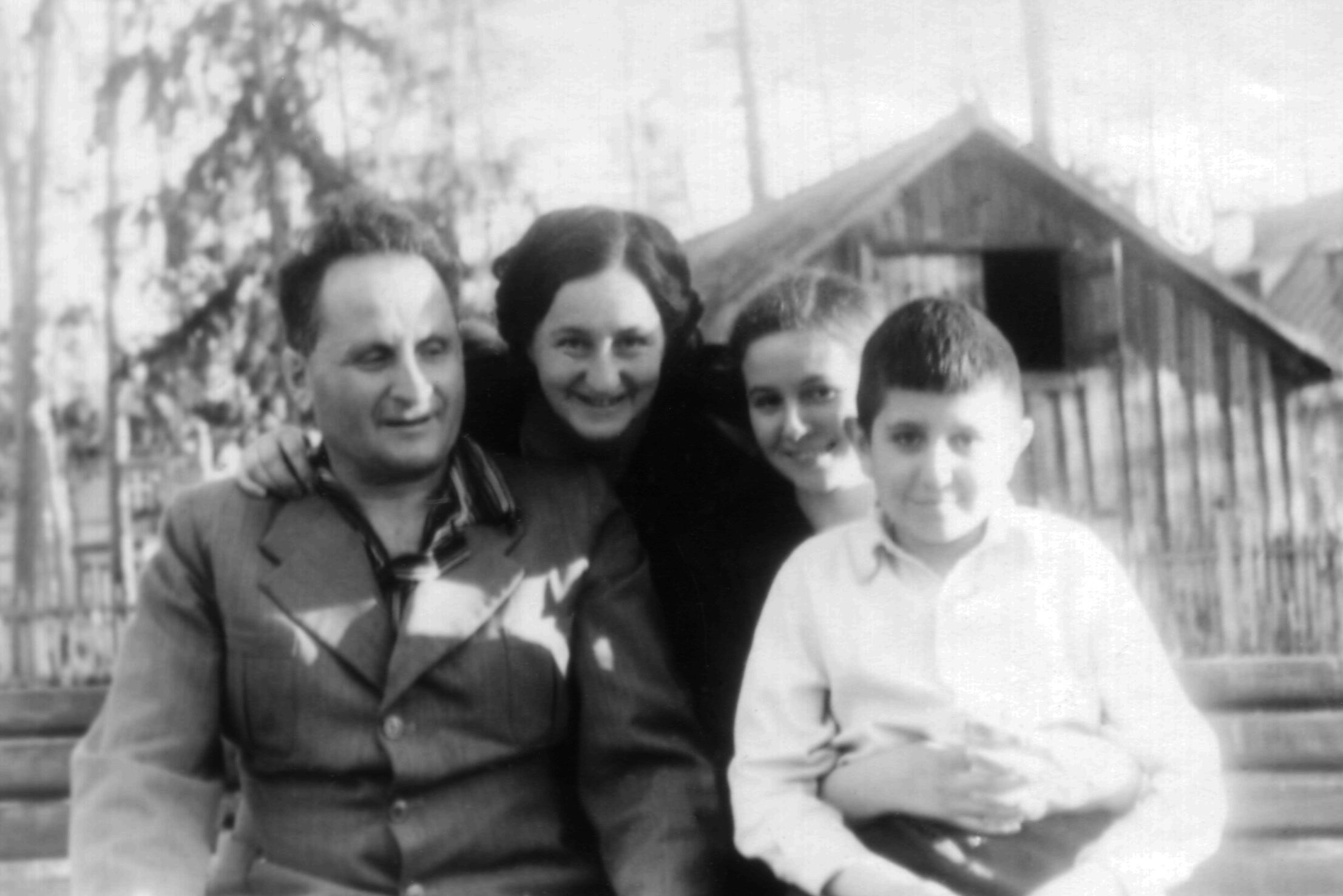 |
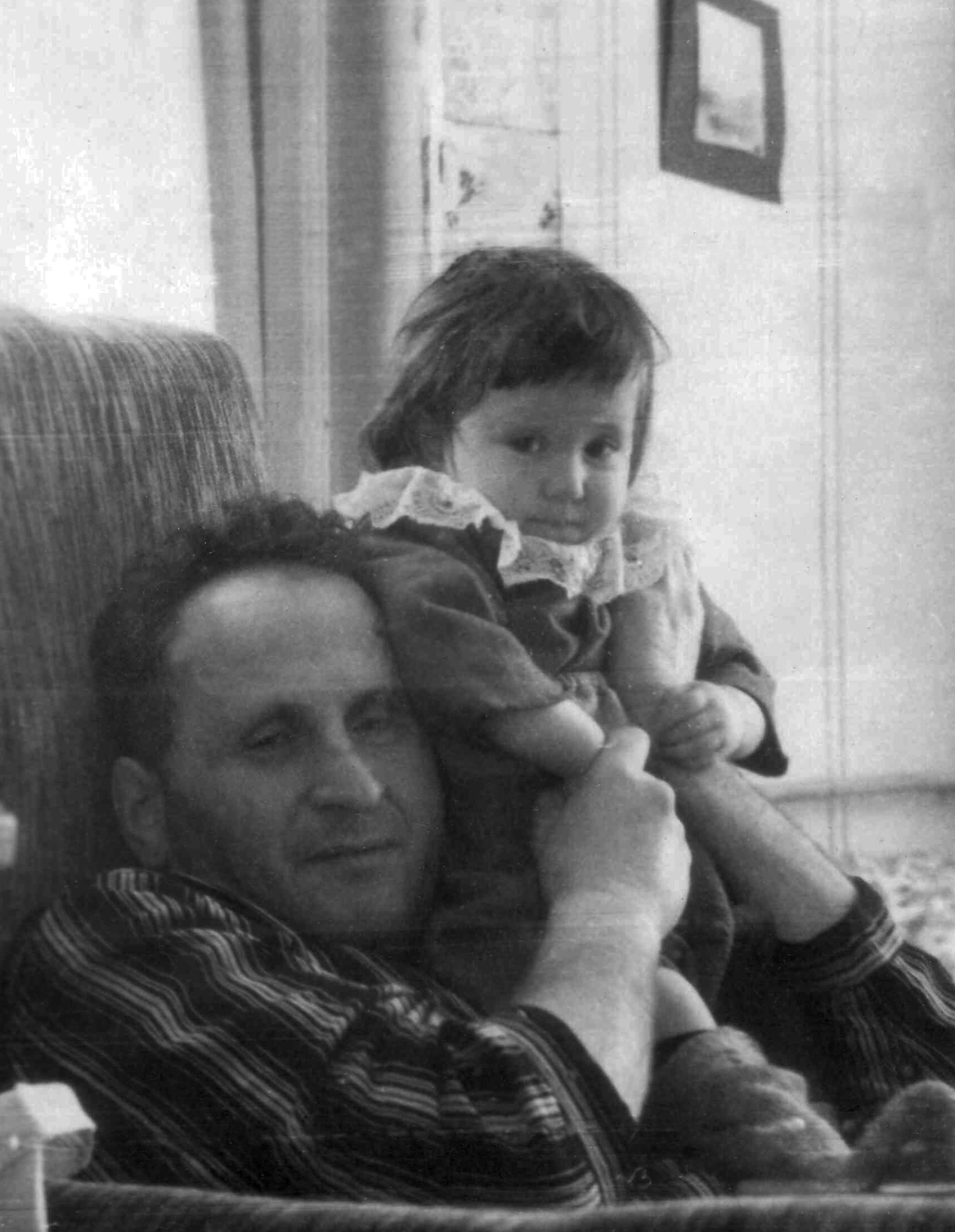 |
 |
|
with wife Elana, daughter Tema and son Maxim Sarov, 1950 |
with daughter Maria Sarov, 1952 |
with daughter Maria Sarov, 1953 |
 |
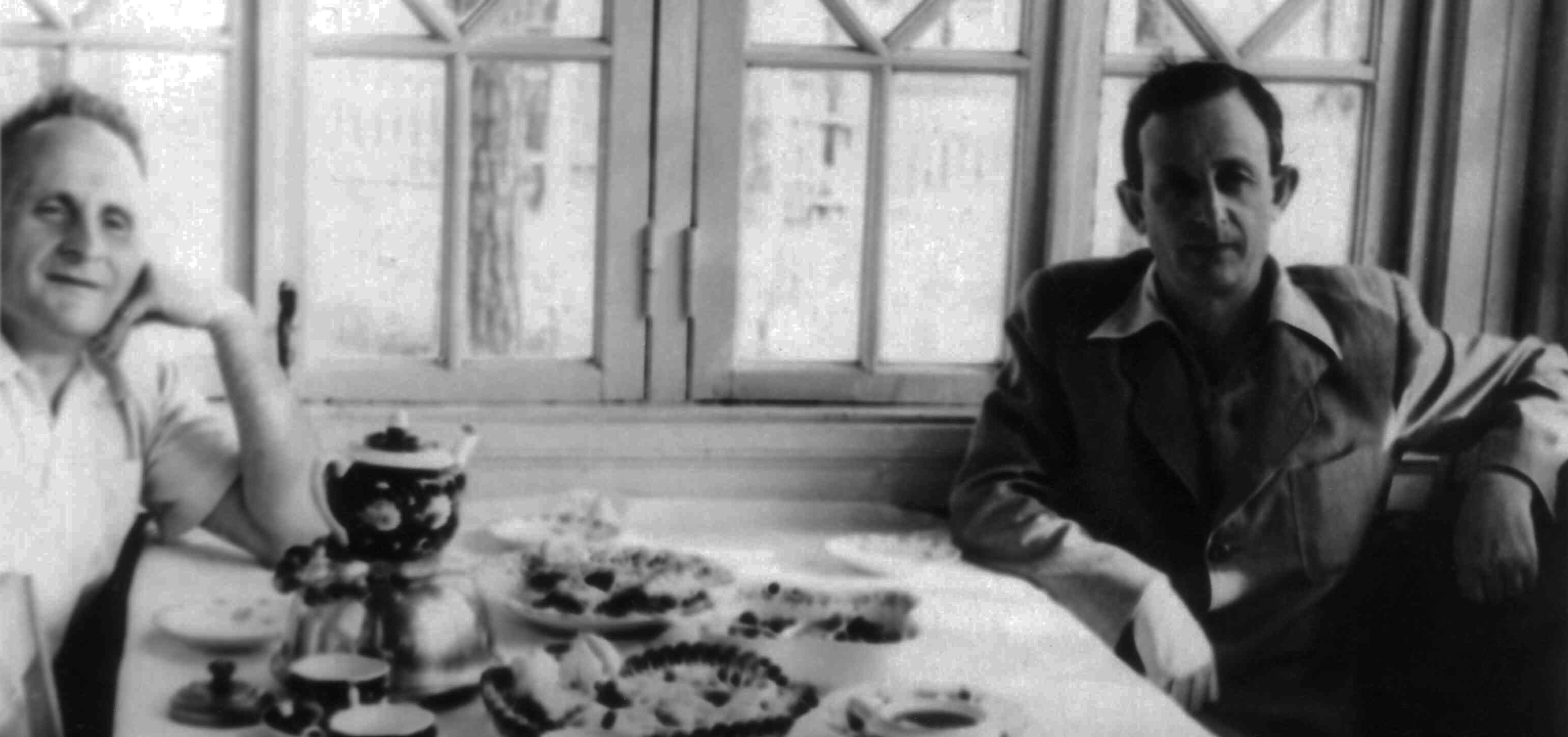 |
|
|
Yakov B. Zeldovich, Andrei Sakharov and David A. Frank-Kamenetskii Sarov, 1950s |
with I. E. Tamm Sarov, early 1950s |
with Y. B. Khariton Sarov, early 1950s |
1956: DAFK leaves the "Installation" for Moscow. He starts working in the Institute of Atomic Energy (director: Igor V. Kurchatov) on plasma physics. He organizes the Department of Plasma Physics at Moscow Institute of Physics and Technology (FIZTECH) and starts teaching there.
1956-1970: DAFK heads a laboratory in the Institute of Atomic Energy and heads the Department of Plasma Physics at Moscow Institute of Physics and Technology. He publishes major works in plasma physics and biophysics.
1959: Publication of "Physical Processes in Star Interior".
1960-1970: Editor of a major popular science journal in Russian, PRIRODA (Nature). Publication of many articles, which popularize physics and astronomy.
1961: Publication of "Plasma - the Fourth State of Matter"
1967: Publication of "Lectures on Plasma Physics"; "Nuclear Astrophysics" and the second, significantly updated Russian edition of "Diffusion and Heat Transfer in Chemical Kinetics".
1969 : The second English edition (Plenum Press) of "Diffusion and Heat Transfer in Chemical Kinetics". It is the translation of the second Russian edition (1967).
 |
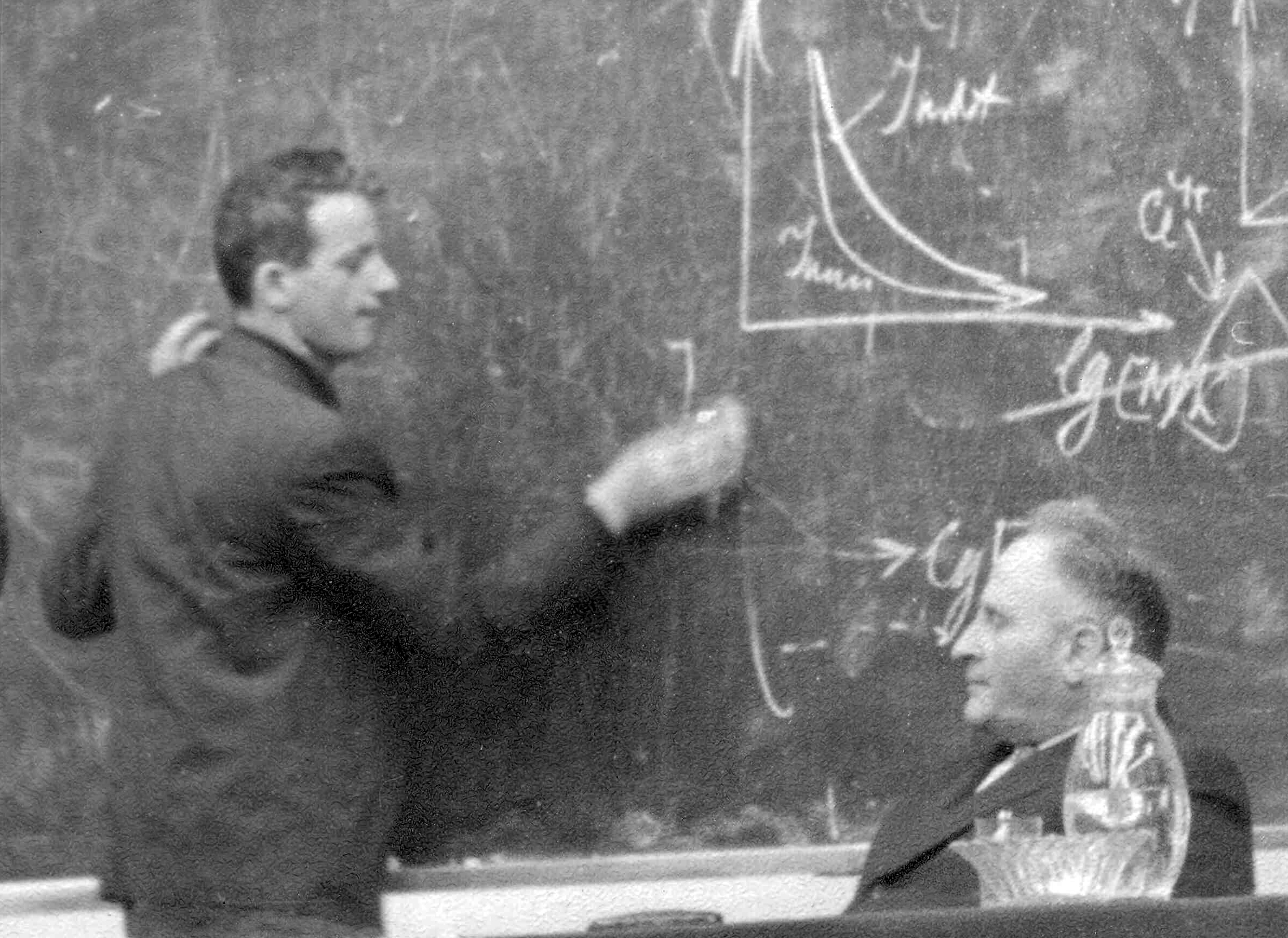 |
| in Suzdal near Moscow, mid-1960s |
with S.E. Shnol in Pushchino near Moscow,
mid-1960s
|
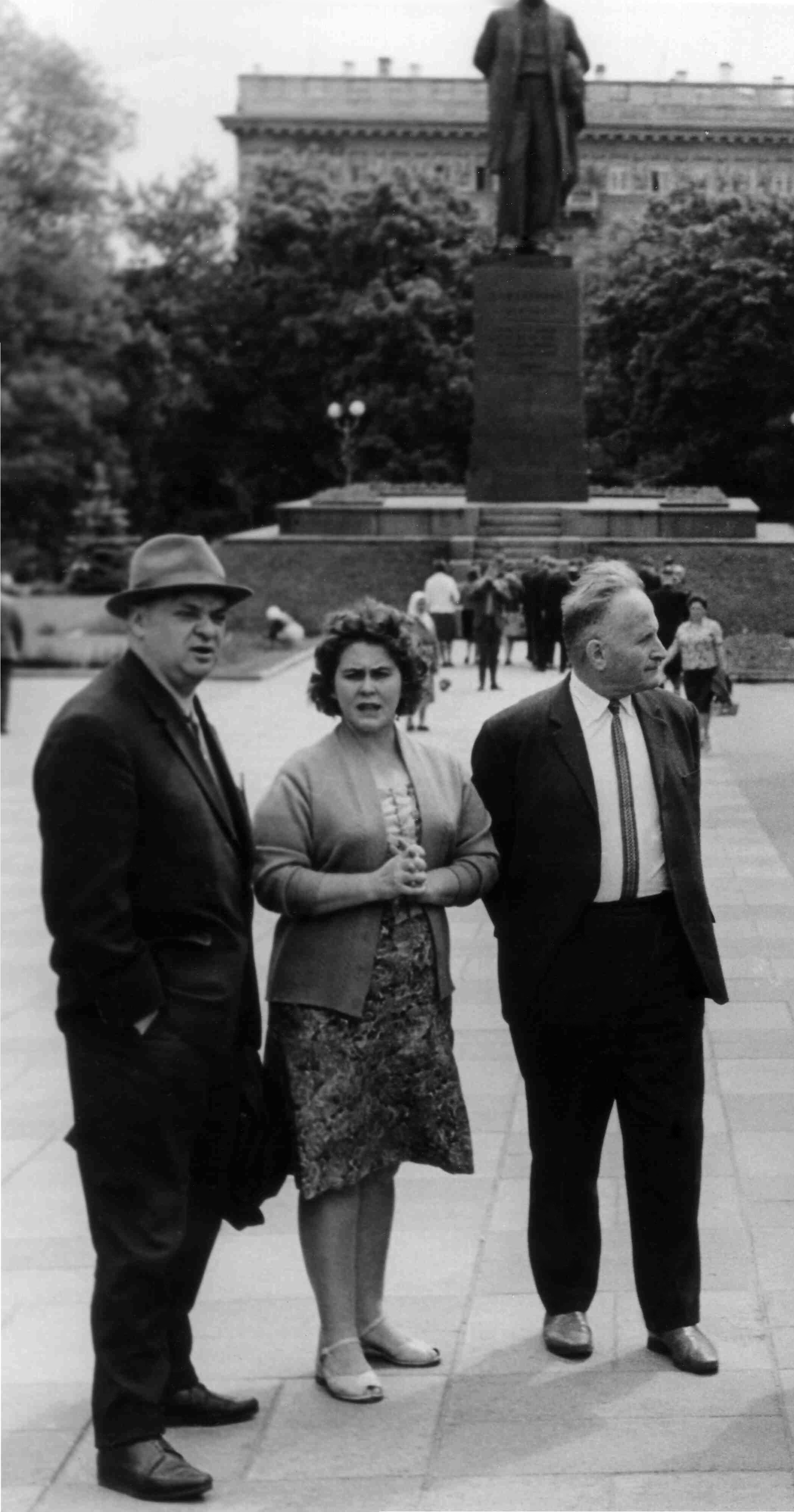 |
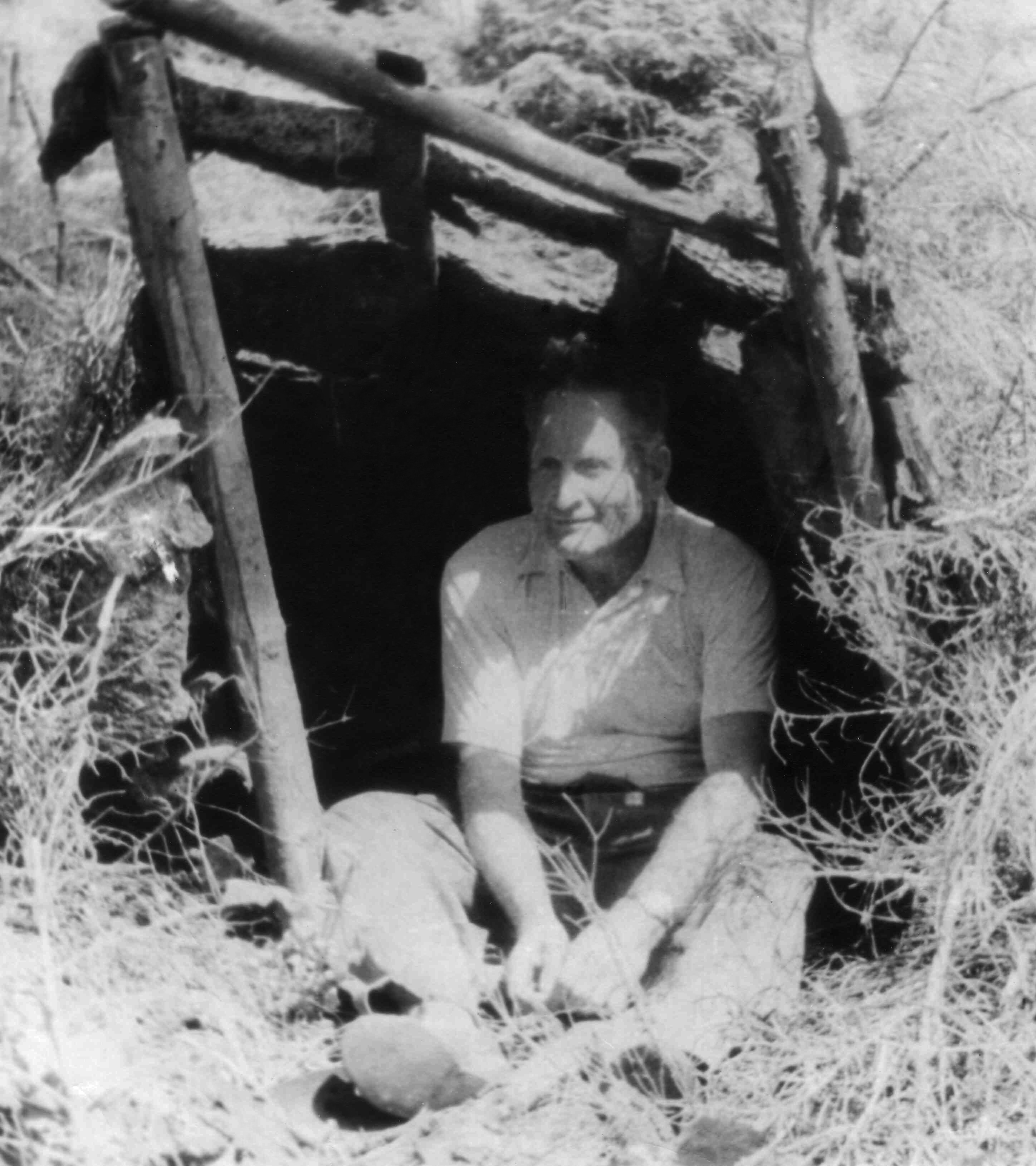 |
| with K.I. Shchelkin (left) and an unidentified woman in Kiev, Ukraine; 1960s |
mid-1960s |
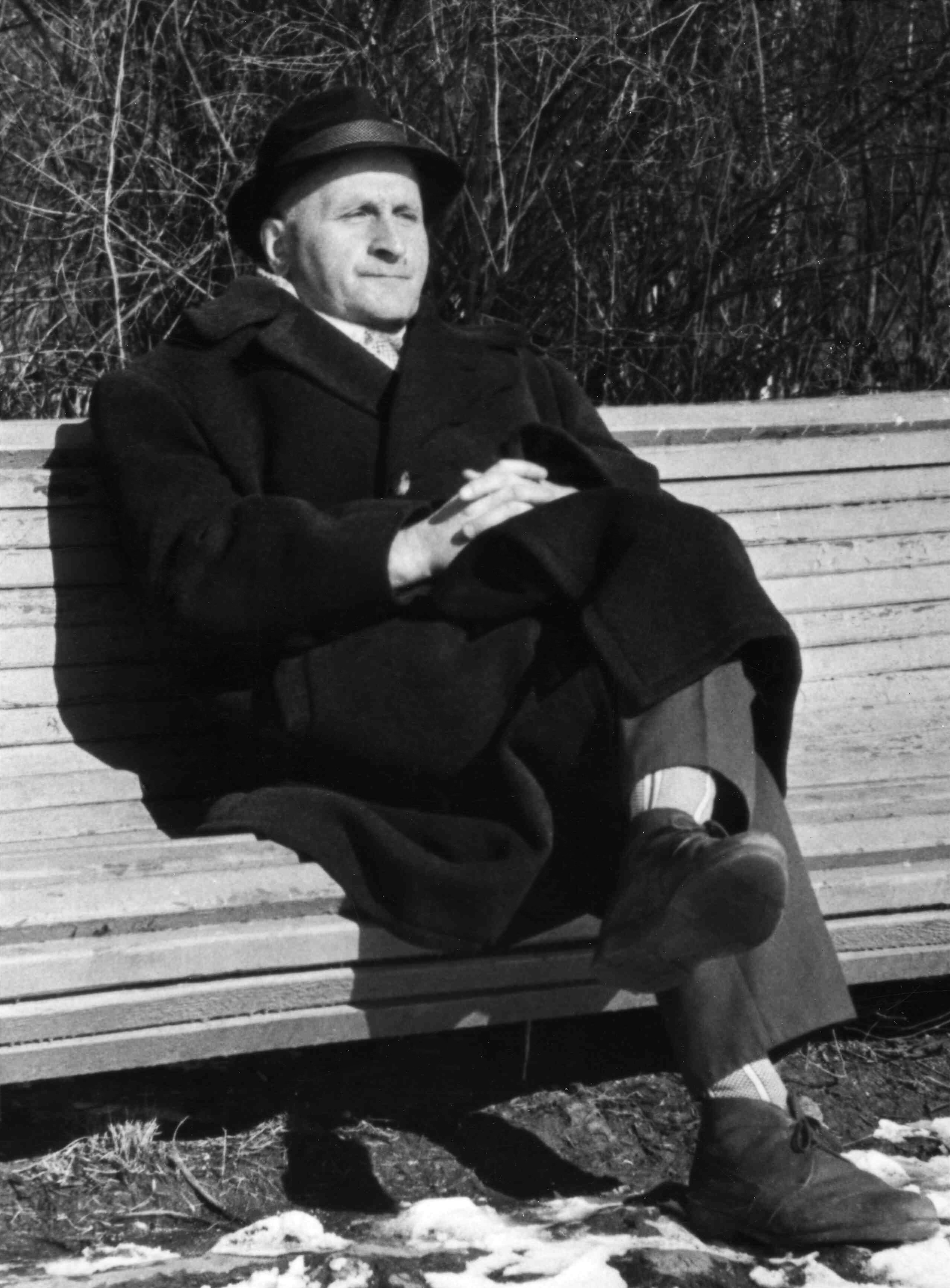 |
 |
 |
|
Moscow, late 1960s |
with his former students in |
in late 60s |
Obituaries:
Priroda 7, 115 (1970)
ZiV 5, 44 (1970)
Conmemorating his 100th birthday:
Наука и Жизнь (Science and Life) No 7, 2010 (www.nkj.ru/archive/articles/18311/).
Troickij Variant - Nauka (No 15 (59), 3 August, 2010) (http://trv-science.ru/59N.pdf)
Books:
David
A. Frank-Kamenetskii
Diffusion and Heat Transfer
in Chemical Kinetics
Russian editions: Moscow-Leningrad: USSR Academy of Science Press , 1947; 1967; NAUKA Press (updated and extended edition), 1987; Intellekt Press; 2008
German
edition: Springer-Verlag,1959
English
editions:
Princeton
Universiy Press, 1955
(translation of the year 1947 Russian edition)
Plenum
Press, 1969
(translation of the year 1967 Russian edition)
David
A. Frank-K amenetskii
Energy in Nature and
Technology
KULTPROSVET Press, Moscow, 1948
David
A. Frank-K amenetskii
Physical Processes in Stellar Interiors (in Russian)
FIZMATGIZ Press, Moscow, 1959
English edition: Israel Program for Scientific Translations, 1962
David
A. Frank-Kamenetskii
The Formation of Chemical Element's in the Depths of Stars (in Russian)
ZNANIE Press, Moscow, 1959
David
A. Frank-K amenetskii
Physical Foundations of the Theory of Stars (in Russian)
1960
David
A. Frank-Kamenetskii
Plasma-The Fourth State of Matter
Russian editions: GOSATOMIZDAT, Moscow, 1961, 1963, 1968
In
English: New York, 1972
Bulgarian,
Polish, Czech,
German and Japanese editions
David
A. Frank-K amenetskii
Lectures on Plasma Physics
Russian editions: ATOMIZDAT, Moscow, 1964, 1968; Intellekt Press, 2008
German edition: DVW, 1967
Polish: Panstwowe Wydawnictwo Naukowe, 1968
David
A. Frank-Kamenetskii
Nuclear Astrophysics
Russian edition: ZNANIEMoscow, 1967
English edition: Plenum Press, 1972
also published in Bulgarian, Polish, Czech, Slovak, German and Japanese
Selected topics from his achievements
Theory of thermal ignition
Flame theory and asymptotics
One of the oldest problems in combustion was related to the estimation of the flame propagation velocity of premixed gaseous reactants. The problem of the determination the propagation velocity of a deflagration wave was studied by many researchers in the twenties century. From a mathematical point of view, the flame propagation velocity is the eigenvalue resulting from the conservation equations. In order to obtain this eigenvalue, the calculation of the overall heat release along the combustion wave was needed. The evaluation of this integral using different approximations was the objective of many studies. Frank-Kamenetskii (together with Y. B. Zeldovich [1]) obtained an approximate solution of this integral by assuming that the reaction rate is important only in regions where the relative temperature difference from the adiabatic flame temperature is of the order of the ratio of the flame temperature to the activation temperature, which is in general very small compared to unity. This temperature difference is known as the Frank-Kamenetskii temperature difference and the ratio of the flame temperature to the activation temperature is known as the Zeldovich number. In this work, Frank-Kamenetskii laid the foundation stone of the use of asymptotics in the study of premixed flame propagation, which was followed by the introduction of the matched asymptotics in the early seventies by Bush and Fendell [2].
[1] Y. B. Zeldovich and D. A. Frank-Kamenetskii, Zhurn. Fiz. Khim, 12, 100 (1938)
[2] W. B. Bush and F. E. Fendell, Combustion Science and Technology, 1, 421 (1970)
(Contribution of Prof. Cesar Trevino, UNAM, Mexico)
Quasy-steady-state
approximation
Several problems in natural science can be described by an initial value problem:
![]() ,
,
![]()
and in many cases the variables can be partitioned to slow variables Y(1) and fast variables Y(2)); Y=(Y(1), Y(2)). The right hand side of the system of ordinary differential equation (ODE) can also be partitioned: f=(f(1), f(2)). According to the quasy-steady-state approximation (QSSA, Bodenstein principle), the solution of the following system of algebraic and differential equations is very close to that of the original initial value problem:
![]() ,
,
![]()
![]()
Applicability of the quasy-steady-state approximation for many systems was proved numerically or, for very simple cases, analytically. Frank-Kamenetskii in 1940 published a paper (Conditions for the applicability of the Bodenstein method in chemical kinetics, Zhurnal Fizicheskoy Himii, 14, 695-700(1940)), which gave a general treatment for the calculation of error e of the QSSA. The point of this approach was that a Taylor-series approximation of the right hand side was given, and then error e was expressed.
![]() ,
,
![]() ,
,
where
![]() is an element of the Jacobian.
is an element of the Jacobian.
This was the first general approach to the quasy-steady-approximation, which was independent from the particular features of a system.
A commented English translation of the above Frank-Kamenetskii article was published by T. Turányi and J. Tóth (Comments to an article of Frank-Kamenetskii on the Quasi Steady State Approximation, Acta Chim.Hung., 129, 903-914(1992)). The ideas of Frank-Kamenetskii on the QSSA were developed further in the following article: T. Turányi, A.S. Tomlin, M.J. Pilling. On the error of the quasi-steady-state approximation, J.Phys.Chem., 97, 163-172(1993))
Links
This Web page was created and maintained by Tamás Turányi and Maxim D. Frank-Kamenetskii
![]() Please
write us
your comments.
Please
write us
your comments.
Last modification:
